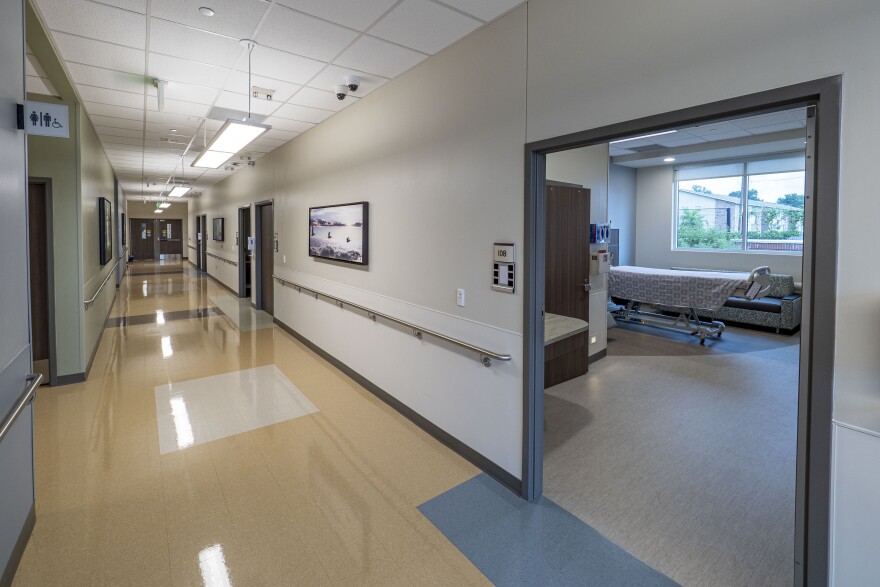The new report from the U.S. Department of Agriculture finds rural working age adults are dying of natural causes at a faster rate than their urban counterparts — and that gap has widened dramatically over the past two decades.
Rural adults from ages 25-54 died of natural causes at a 6% higher rate than urban residents in 1999. Twenty years later, that number grew to 43%, according to the report.
Those mortality rates, based on data from the Centers for Disease Control, decreased over the two decade span for urban adults in the age group.
“The more rural the area, the greater the increase in prime working-age natural cause mortality rates (or smaller the decrease) over time,” according to the report.
The study did not conclude what’s behind the rising mortality rate for rural adults, but its authors said hospital and physician shortages are likely a factor. Differences in state roll-out of Medicaid expansion also could influence how often people seek care, according to the study.
Alan Morgan, CEO of the National Rural Health Association, said the report is jarring but not surprising. He said in many rural areas there’s a lack of access to care, making it difficult to catch medical conditions early – especially cancer.
“It's just a matter of not having access to local care and also, taking time off of work to be able to have to drive an hour or two to seek care,” Morgan said. “It doesn't seem like at face value would be a significant barrier, but it is.”
Morgan said rural hospital closures are impacting life expectancies.
Since the beginning of 2005, about 190 rural hospitals have closed or have been converted to no longer offer in-patient services, according to the University of North Carolina’s Cecil G. Sheps Center for Health Services Research.
That number is likely to grow, according to Harold Miller, president and CEO for the Center of Healthcare Quality and Payment Reform.
“We've estimated that over 600 hospitals around the country are at risk of closing over the next several years because of the financial problems that they're facing,” Miller said.
He said a few billion dollars would get rural hospitals out of deficit.
“We spend (just under) $4 trillion on health care nationally, so it would be less than one-tenth of 1% increase in health care spending in order to be able to keep these essential services open,” he said. “So that's, I think, a very important thing for people to recognize."
Rural mortality rates driven by women
Although the rate among working age rural residents grew overall, different populations saw varied levels of increases. For instance, Indigenous men and women experienced the largest rate increase, with Indigenous women seeing the largest rate spike over the 20-year period, at 55%.
Across the board the rate grew faster for women overall, according to the report.
Mary Gowin, a University of Oklahoma Health Sciences Center professor and director of the school’s Primary Care Health Policy Division, said the rising rate among women is concerning.
While cancer and heart disease were the leading causes of natural deaths among men and women, pregnancy-related deaths grew by 313% for rural women.
Gowin points to the rise of maternity care deserts across Oklahoma and other Great Plains states, which means women need to travel farther to seek obstetric care.
“So, I think that’s a big deal to me in my work and also just a big deal across a lot of the states that have these high rates of pregnancy-related deaths,” Gowin said.
She said struggling rural hospitals, social determinants of health and policy impacts all play a role in the disparity.
Morgan, of the National Rural Health Association, agrees there’s no single answer on how to improve access to care for rural populations or outcomes.
“I think it's easy to look at this report and realize how horrific the situation is. That being said, this drives innovation,” Morgan said. “And I think at the end of the day, this report just clarifies that our current healthcare system is not operating properly, or how we all would like it to operate.”
Editor's note: Harold Miller, president and CEO for the Center of Healthcare Quality and Payment Reform, contacted Harvest with a corrected figure in his quote regarding national spending on healthcare.
This story was produced in partnership with Harvest Public Media, a collaboration of public media newsrooms in the Midwest. It reports on food systems, agriculture and rural issues.


